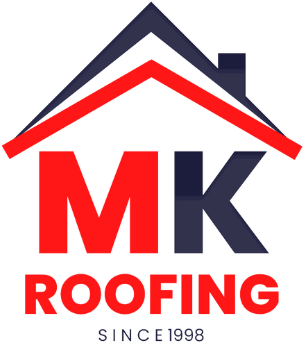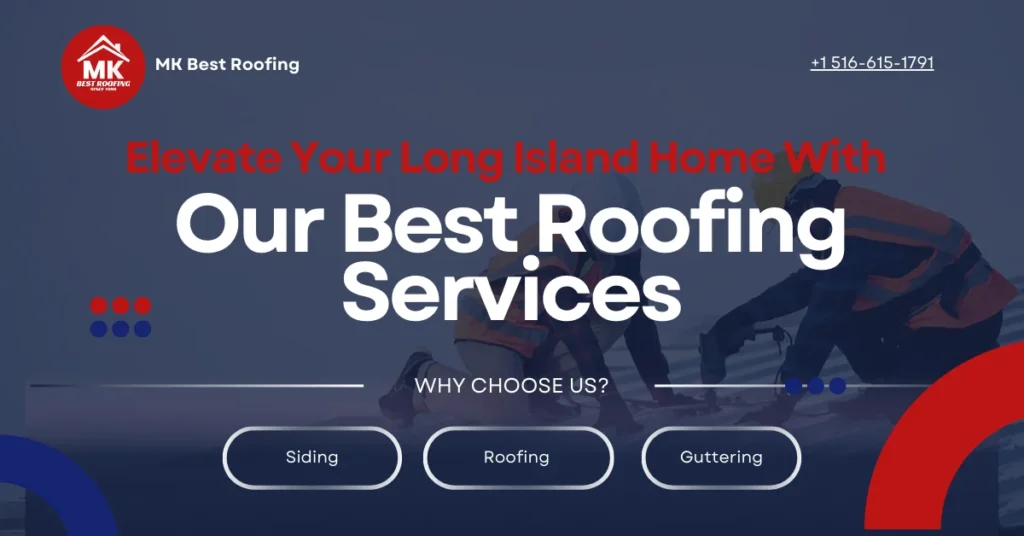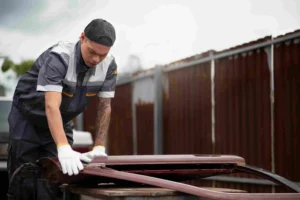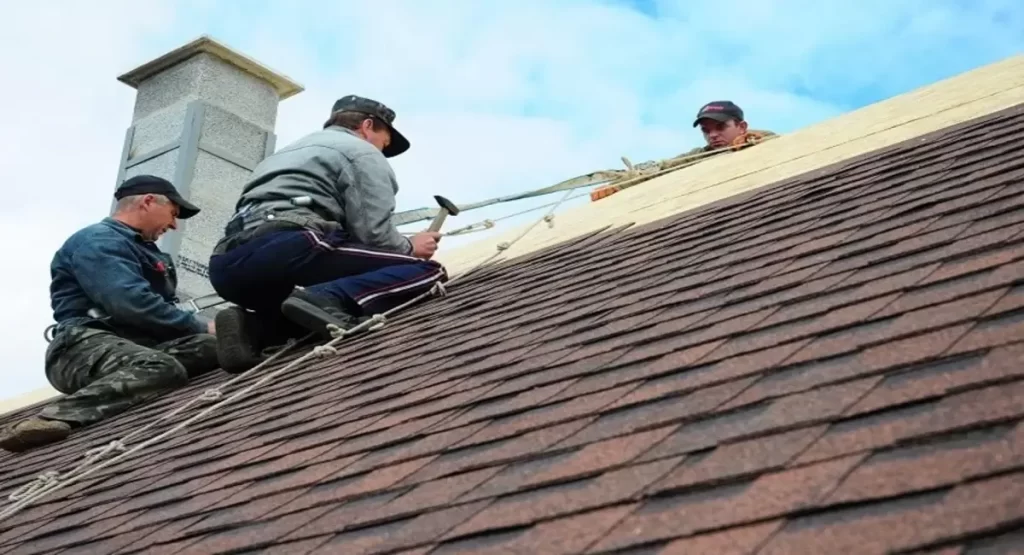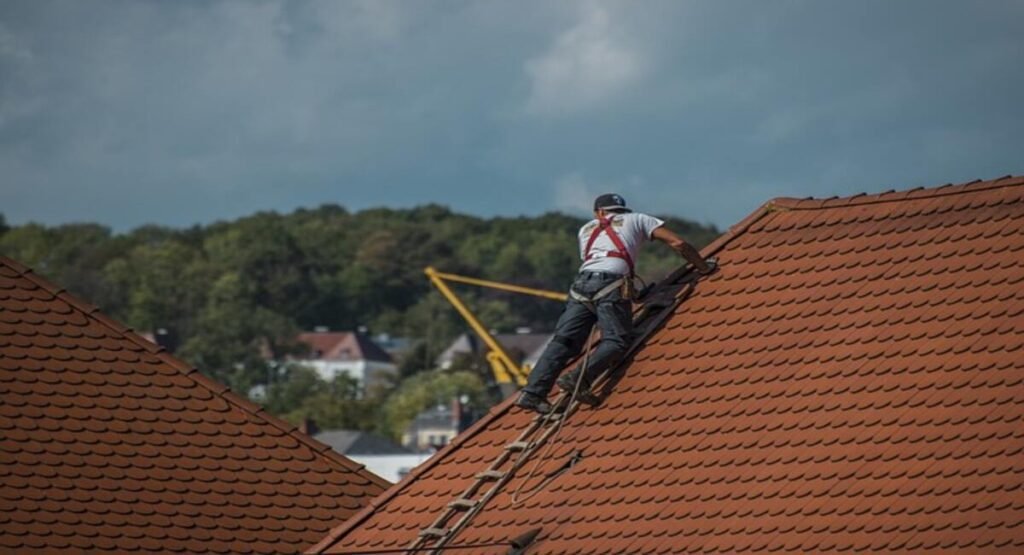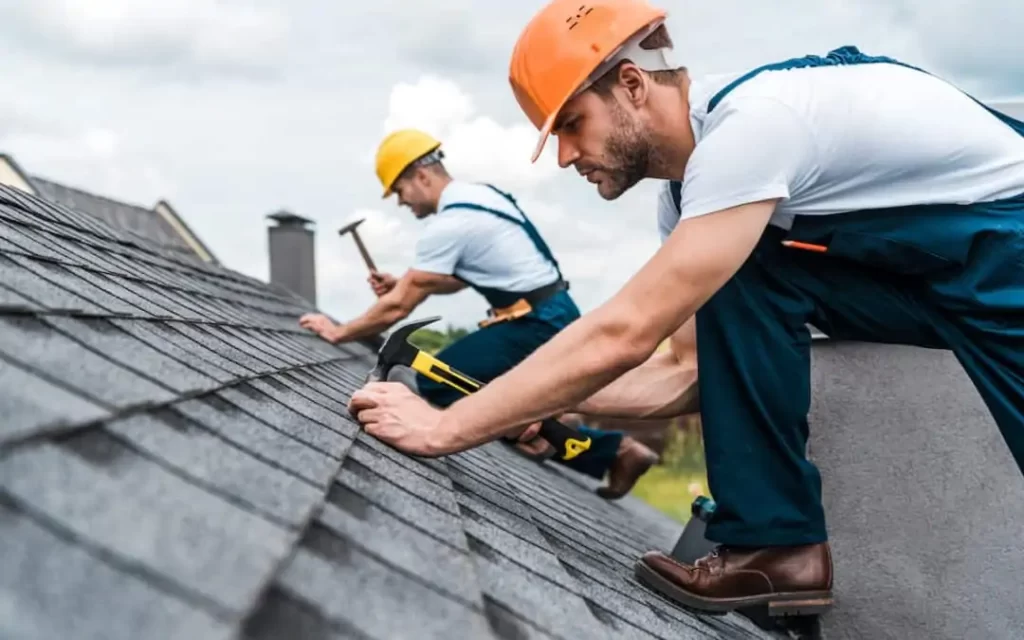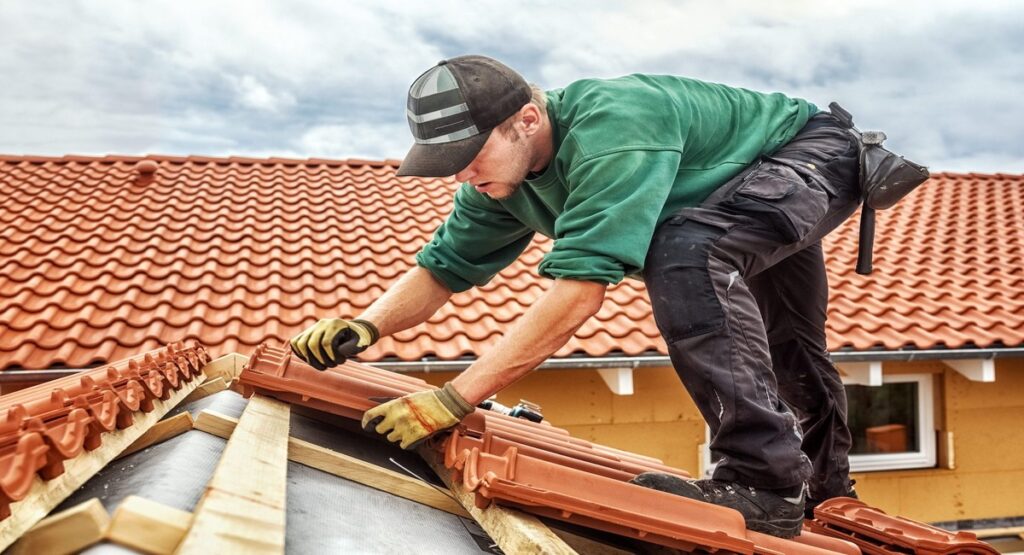When choosing a roofing material, every commercial or residential property will be bombarded with a host of materials, out of which two are leading the way: Thermoplastic Polyolefin and Polyvinyl Chloride. Both types have their special characteristics, advantages, and drawbacks. In this comprehensive guide, we will compare TPO roofing vs PVC roofing to help you make an informed decision for your next roofing project.
Key differences between TPO and PVC roofing concern composition, durability, cost, and maintenance. Additionally, we will explain how to tell the difference between TPO and PVC roofing. By the time you’re through with the guide, you will certainly know which material best suits your needs and budget and why you have to consult professional roofing services to bring such projects to completion.
What is TPO and PVC Roofing?
Before discussing the differences, let’s first understand what TPO and PVC roofing materials are. The important thing to note is that both come under the category of thermoplastic membranes, which basically means they can be heat-welded at the seams. This heat welding forms strong, watertight bonds that enhance the overall performance of the roofing system.
Thermoplastic Polyolefin (TPO) roofing is a single-ply roofing membrane that is manufactured from single-layer synthetics with reinforcing scrim for covering flat roofs. It is a blend of polypropylene and ethylene-propylene rubber, giving this material a good balance of durability and flexibility. This roofing material is highly energy-efficient, UV-resistant, and cost-effective.
On the other hand, PVC roofing is also a single-ply roofing membrane which is made up from different synthetic materials. The roofing membranes made of PVC consist of two layers of PVC plastic, each with a scrim reinforcement of polyester sandwiched between them. These result in a very durable, flexible, and chemical-resistant roofing material. It has been used for many decades already, having established a good record in both different climates and conditions.
Difference Between TPO and PVC Roofing
While TPO and PVC are similar-looking roofing materials at first glance, there is more than one key difference between them. Understanding these differences is essential when considering TPO roofing vs PVC roofing for your project. Let’s break down the main distinctions in a comparison table:
|
Feature |
TPO Roofing |
PVC Roofing |
|
Composition |
Polypropylene and ethylene-propylene rubber |
Polyvinyl chloride with plasticizers |
|
Thickness |
45-80 mils |
50-80 mils |
|
Seam Strength |
Good |
Excellent |
|
Chemical Resistance |
Good |
Excellent |
|
UV Resistance |
Good |
Excellent |
|
Energy Efficiency |
Highly reflective |
Highly reflective |
|
Flexibility |
Good |
Excellent |
|
Lifespan |
15-20 years |
20-30 years |
|
Cost |
Lower |
Higher |
|
Environmental Impact |
Lower |
Higher (due to chlorine content) |
Pros and Cons of TPO Roofing
Within the last couple of years, TPO roofing has gained popularity, especially in the commercial roofing sector. Let’s explore some of the advantages and disadvantages of this roofing material:
Pros of TPO Roofing
- Cost-Effective: It is relatively less expensive compared to PVC and several other roofing materials. Of course, budget-sensitive projects are likely to find it appealing.
- Energy Efficiency: The white-colored surface of TPO roofing may reflect a significant amount of sun rays, meaning less heat absorption and lower cooling costs for the building.
- Easy Installation: TPO roof materials are pretty light in weight and available in wider sheets, which may facilitate quicker and easier installation as compared to other roofing materials.
- Durability: TPO resists tears, punctures, and temperature changes, ensuring good longevity.
- Chemical Resistance: It ensures excellent resistance to many common chemicals, algae growth, and dirt accumulation.
- Environment-friendly: TPO is considered to be an environment-friendly material since it doesn’t have chlorine in it and it is fully recyclable at the end of its life cycle.
Cons of TPO Roofing
- TPO roof has a life expectancy of 15 to 20 years while PVC roof can serve for 20-30 years.
- Quality variability: Variability in quality can vary from one manufacturer to another. So proper research and selection of a good manufacturer is the key to find good quality TPO roofing material.
- Seam Strength: TPO seams can be heat-welded, which makes them strong, though not as strong asPVC.
- UV Resistance: Has good resistance to UV action, but extensive exposure to high sunlight levels degrades TPO relatively faster to PVC.
- Potential for Shrinkage: Older forms of TPO shrunk over time and pulled significantly at seams and fasteners.
Pros and Cons of PVC Roofing
As a commercial roofing option, PVC roofing has enjoyed years of reputation as one of the most reliable roofing materials, and it is showing continuous improvement and performing well. Here are the key advantages and disadvantages of PVC roofing:
Pros of PVC Roofing
- Durability: PVC roofing is resistant to tear, punctures, and impacts. This durable roofing material can last for 20-30 years with proper maintenance.
- High Chemical Resistance: It also has very high resistance to most chemicals such as oils, greases, and acids, making it the perfect choice for roofing in certain industrial uses or on a building that has an exhaust system.
- Seam Strength: Seam welding creates a very tight, rigid seal that greatly benefits both water resistance and the overall life of the roof.
- High flexibility: PVC will not go brittle with cold, and it can easily bend to absorb building movement and temperature changes without cracking and splitting.
- Fire Resistance: Because PVC does not support combustion, once the source of flame is taken away, it is self-extinguishing and thus offers extra safety.
- Energy Efficiency: Because it is highly reflective, it cuts down on heat absorption and hence lowers the cooling bills, similar to TPO roofing.
- Recyclability: At the end of their life cycle, the recyclability of PVC roofing materials is possible. Many manufacturers offer recycling programs to reduce environmental impacts.
Cons of PVC Roofing
- Higher Cost: Generally more expensive than TPO and some other materials, the long life and superior performance can make the higher investment worthwhile.
- Environmental Concerns: Manufacturing of PVC involves chlorine usage. The element emits chemical fumes that raise environmental concern, and the material on burning also has chances of toxicity.
- Plasticizer Migration: PVC is made flexible by the use of plasticizers. Over time, these plasticizers may migrate and cause shrinking and brittleness. This problem has been improved in modern formulations.
- Installation Difficulty: Installation in some cases is more difficult than using other materials. Proper heat-welding and membrane attachment require knowledgeable personnel.
- Prone to Punctures: Although adequately robust, PVC is not puncture-proof. A rooftop with any level of foot traffic or overhanging trees is a cause of concern due to easy penetration in the material from sharp objects.
- Odor during installation: Some of the chemicals used in the process may cause a strong odor while installation is going on. This can be discomforting for some time to the occupants as well as the neighbors.
Cost Comparison
There are a variety of factors involved with TPO vs. PVC roofing cost consideration. Of course, the initial cost of materials is important; however, equally as important is the long-term expense or savings.
Probably, the lower initial cost of TPO explains its popularity these days, especially in commercial roofing projects, as most of these projects are constrained in various ways financially. While TPO can be installed between $3.50 to $7.50 per square foot, PVC ranges from $6.00 to $9.50 per square foot installed.
However, PVC outlives TPO. A correctly installed and cared-for PVC roof might last 20 to 30 years, while TPO roofs only last about 15 to 20 years on average. This could balance out higher upfront costs with less frequency over time.
The right option, in fact, depends on your situation, budget, and long-term goals. It is always a great thing to take advantage of professional roofing services for a real cost estimate and expert advice regarding the specific project you are working on.
Heat Reflectivity and Cooling Benefits of TPO and PVC
Both TPO and PVC materials provide good heat reflectivity, thus becoming part of the contribution to energy efficiency and cooling benefit. The SRI value for TPO is 110 or higher. The SRI value for PVC is 108 or higher.
Both roofing materials reflect 80% of sunlight and transmit 90% of heat; however, PVC retains its reflectivity much longer, mainly due to its higher resistance against dirt and chemicals. The high reflectance leads to reduced heat absorption that consequently lowers the cooling costs, prolongs the lifespan of HVAC systems, enhances indoor comfort, and generally helps offset the urban heat island effect.
When comparing TPO roofing vs PVC roofing, a great deal of energy-saving benefits can be enjoyed from both. Professional roofing services can help determine which one would best provide the greatest efficiency according to your area and climate.
Factors to Consider When Choosing Between TPO and PVC
Every project has its requirements, and what may suit one building may not necessarily be right for another. Here are the key considerations to keep in mind when making your decision:
- Climate and Weather Conditions: PVC remains highly suitable for extreme weather and industrial conditions, whereas TPO performs reasonably but degrades with intense UV exposure.
- Building Use: PVC goes well with buildings that emit chemicals, whereas TPO is suitable for standard commercial or residential use.
- Roof Slope and Drainage: Both materials can be laid on flat roofs but PVC can help more in complex roof shapes with better sealing.
- Aesthetics: Both PVC and TPO are available in white, tan, and gray colors. If you want a color other than those three, TPO has different colors available and also offers custom color options.
- Budgetary Constraints: TPO is relatively more inexpensive material as compared to PVC, though PVC may recover its cost through life expectancy.
- Energy Efficiency Goals: Both are energy-efficient, but PVC will retain reflectivity slightly better as time passes.
- Environmental Issues: TPO has an environmental benefit as it is non-chlorine, but both resins can be recycled and are energy-intensive.
- Installation Considerations: TPO may be quicker to install as compared to PVC, but local contractor expertise might make one material more preferable to the other.
- Warranty Options: PVC generally comes with longer warranties, which provide more long-term security.
- Future Plans: For long-term use, PVC has a longer lifespan, while TPO’s lower cost is more suited for short-term plans.
- Local Building Codes and Regulations: Check local codes as some regions may have material-specific requirements.
- Fire Resistance Requirements: PVC has slightly better fire resistance, which may be critical depending on building use or regulations.
Which Roofing Option is More Environmentally Friendly?
Regarding the environmental impact of both TPO and PVC roofing, assessments shall be performed based on different criteria such as in terms of production processes, energy efficiency during its service, and recyclability at the end of its lifetime.
Since TPO is chlorine-free, it may have a less environmentally friendly production and formulation process. Further environmental advantages come from the longer life cycle of PVC and its established recycling.
Both of these materials may play a role in an environmentally conscientious building process, though each offers somewhat different benefits, when compared to traditional roofing materials such as asphalt. But correct installation, periodic maintenance, and responsible end-of-life disposal or recycling remain critical.
Looking For Expert Roofing Services?
Knowing that installation or replacement of a TPO or PVC roof is important, just like their materials, installation does call for hiring the expertise of a skilled roofing contractor. Proper installation will ensure the longevity, performance, and energy efficiency of the roofing system. This is where professional roofing services come in, and with MK Best Roofing, residents on Long Island have no reason to look any further.
MK Best Roofing offers comprehensive roofing solutions in Long Island with years of experience and expertise in every project that we undertake. What distinguishes us from other competitors is the status of Master Elite GAF-certified contractors. This itself speaks volumes about our commitment to excellence and continuous professional development.
Conclusion
Throughout this in-depth guide, we’ve learned that both TPO and PVC roofing systems have huge benefits for commercial and residential projects. However, the choice between TPO roofing vs PVC roofing isn’t really a black-and-white decision, as both have very unique strengths and considerations.
Whichever roofing material you may choose, proper installation and maintenance is required to gain maximum benefit from your new roof. That is where professional roofing services like MK Best Roofing come into place. Our expertise can ensure correct installation of the chosen roofing system, optimized energy efficiency, and proper maintenance. Reach out to us today to discuss your roofing project requirements!
TPO is considered to be very much cost-effective with its reflective properties reducing energy consumption. It became popular in the recent past, because it was affordable and its performance was quite decent. On the other side, PVC has been one of the long-standing choices since they are durable and have superior chemical resistance. While generally less expensive, PVC might be valued better in the long run because of robustness and fire resistance. It ultimately depends on your building’s specific needs when considering both TPO roofing vs PVC roofing for your project and your specific budget needs.
Both TPO and PVC roofing membranes become slippery when wet, and pose a hazard for the workers coming up to climb on the roof. There are steps one could take to minimize any such chances of slipping. Wearing of slip-resistant footwear, a safety harness, and fall protection equipment when working on this surface of the roof. Avoid walking on the roof when wet and icy, and it is best to climb on during warmer weathers and conduct routine cleaning of the roof to remove any debris and contaminants that may be part of the slipperiness. Hiring professional roofing services can provide guidance on proper safety measures and maintenance practices for both TPO and PVC roofing systems.
How to tell the difference between TPO and PVC roofing can be tricky, but some signals help in identifying what material a certain thing would be. Normally speaking, PVC has a glossier surface, while TPO is more matte. Additionally, PVC membranes are normally thicker and more inflexible than TPO membranes.
When comparing TPO vs PVC roofing cost, you can quickly note that TPO usually guarantees a cheaper initial material cost compared to PVC. Although that may make TPO apparently an affordable choice at the beginning, PVC is a cost-effective choice as it provides durability and longevity, which can reduce overall maintenance and replacement costs over time.
Both the TPO and PVC roofing systems are energy-efficient owing to their reflective properties, which reduce the absorption of heat. These materials can significantly lower cooling costs, especially in warmer climates. If proper insulation systems and cool roof technologies are combined, they can yield large long-term energy benefits. Generally speaking, both the TPO roofing and the PVC roofing are close to each other in being energy-efficient, but most of the factors depending on the performance are based upon the local climate and building design.
